War crimes. Violations of international law, such as the targeted killing of civilians, which could lead to the prosecution of those responsible. As the horrors of conflict continue in Ukraine, claims of war crime are increasing. Proving a crime has been committed in these circumstances is a long process and can be incredibly tough. But science can provide vital evidence, specifically archaeology and anthropology. These are fields often associated with historical findings or learning about ancient life. But when applied within forensics, they can help solve crime. Through the use of context, evidence and examination, both disciplines can tell us about who individuals are and potentially help us understand what happened to them. We explore how clues at a crime scene can convert a static picture into a series of actions, what human remains can tell us about who a person was and what happened to them, how microbes may be useful in helping pinpoint time of death, and why identity is so important in humanitarian efforts and war crime testimony...
In this episode
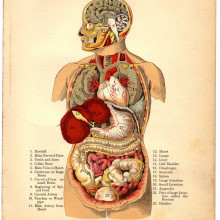
00:53 - Reviewing the case of David Bennett
Reviewing the case of David Bennett
Muhammad Mohiuudin, University of Maryland
In January, US surgeons and scientists achieved a breakthrough in transplantation surgery: they gave a man dying of heart failure the heart of a pig that had been specifically developed, and altered genetically, to produce organs compatible with humans. The recipient, David Bennett, survived for two months; he passed away in March. Now the doctors looking into his case have announced that a pig virus might have been partly to blame. They’ve detected low levels of an agent called porcine cytomegalovirus. This can’t infect human cells but it might have begun to spread through the pig heart cells, causing the donor organ to fail. Nevertheless, it’s very early days and was present at only very low levels meaning it may just have been a red herring. Chris Smith caught up with the surgeon who carried out the transplant, Muhammad Mohiuddin, to discuss what happened in this case, and what we’ve learned about the potential of using pig organs in this way…
Muhammad - We performed the first ever pig to human heart transplant in a patient for whom we have exhausted all other means to save his life. It took place on January 7th, 2022.
Chris - Now the patient has unfortunately passed away. Why did he not make it?
Muhammad - For that I'll have to give you a little background. This patient came in a very bad condition with heart failure and he was put on a heart lung machine. So he was kept alive by these means. He was deemed ineligible for human heart because of his non-compliance issues and several other factors. So, we offered him this pig heart, which was genetically modified to make it more acceptable to humans. And in our non-human primate studies, we proved this heart can sustain life of a baboon for up to nine months. For the first 50 days, his heart functioned very well, but then it was contracting very well, but it was not relaxing. And for that reason, you know, we had to put him back on that heart lung ECMO machine for the last 10 days to see if we can rescue this heart. But unfortunately it did not happen.
Chris - In summary, this gentleman received this genetically modified pig heart, which you had preliminary data from non-human animals, primates, baboons for example, that it could sustain an animal of human sort of size for an extended period of time. He was initially doing well. Then something caused him to decompensate. Things went wrong. Do you have any insight into why you ended up back on that machine and why he just didn't make it?
Muhammad - There are several factors, just after the transplant and the heart was beating well we found that he had a dissection, so we had to stop the heart again, fix that. And from that, we thought that his kidneys and the bowel got affected a little bit because his kidney did not function throughout his survival. And we had to put him on dialysis. He had multiple infection issues, and now we found that the heart had DNA from aporcine virus. We are investigating whether this virus played any role. And we so far have no evidence that this virus caused any disease. This is an ongoing investigation and this virus is just one piece of the puzzle.
Chris - Have you got plans in the near term to do this again? Or are you now in learning phase? Let's see what happens? Let's evaluate and then see where we find ourselves?
Muhammad - Yeah, there is a lot to be learned and we are very grateful to Mr. Bennett for allowing us to learn from his participation in this process. We are excited that, you know, this heart did not reject within few days until day 50. It looked like that there was no signs of rejection. So this provides a lot of hope that this is a viable option.
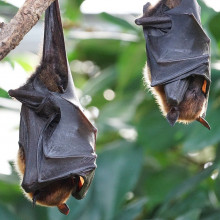
05:24 - Bats that buzz
Bats that buzz
Danilo Russo, University of Naples Federico
Danilo Russo first noticed something rather odd about bats when out in the field, catching them for his PhD thesis. Picking them out of the net, he noticed that many would vibrate and hum. In fact, the sound was uncannily like a wasp or hornet. Could they, he wondered, be doing it to fool a predator into thinking they’re a stinging insect and to steer clear? Now, 20 years later, he’s followed up on his hunch and provoked quite a buzz by showing these bats do indeed do just that, as Harry Lewis has been hearing…
Danilo - Among animals we have a lot of situations where unarmed animals imitate dangerous or unpalatable species mimicking their colours or morphology or whatever, so that they can actually deter predators for the time needed to escape. In this particular case, these bats actually use sound rather than colour, which is very unusual. And you know, it's the very first time that this kind of strategy is found in mammals. We have no other situations where mammals mimic insects.
Harry - We've got a clip. So let's, um, let's take a listen. How did you figure out that this sound could be used to scare away predators?
Danilo - What we did first was to record bats, then we recorded insects which might be potentially mimicked. And we recorded four species: buff-tailed bumblebees, European Hornets, domestic bees and European paper Wass. All these guys actually may be encountered by owls for example, when owls explore cavities, where they roost in caves or whatever, because the main predators of these guys are birds of prey, especially owls. So the idea is that owls can sometimes experience the stinging defense of these insects and the outcome was that especially if you take out of your data set the variables that cannot be heard by the owls. These kind of buzzes are especially convincing, for owls because they don't detect the higher frequency. They just sound like insects to them.
Harry - Right. So it doesn't need to be a precise mimicry. It just needs to fool the owl. It just needs to sit within the owls hearing threshold.
Danilo - That's exactly the point. Yeah. You know, I was just surprised to see that owls actually have a sensitivity to higher frequencies, which is quite similar to that of the human ear. And this is why when these bats buzz, they really sound like wasps or hornets to us as well. I mean it's quite convincing.
Harry - Okay. So here is a comparison. This is the sound a domestic bee makes. And this is that bat mimicry again. I mean, it still strikes me as strange though that this sound alone is capable of scaring your birds of prey.
Danilo - Owls that have not been raised in captivity, that have been out there for say at least one year or more, they are especially reactive. So the idea is that they may have encountered buzzing insects and know that they're dangerous. While if you use naive owls, they're sort of less reactive.
Harry - Why is it then that this mimicry is so hard to find in other mammals? Why is it that the bat is the only specialist?
Danilo - I don't think that bats are the only specialists. We know that there are some rodents, for example, that buzz when disturbed, and that's gonna be our next step, because I'm pretty convinced that this kind of mechanism may actually be more widespread than thought.
Harry - This is like opening the scientific curiosity door. There's a lot of research that could be built upon your findings, that stem all the way back to your PhD.
Danilo - Yeah, I really think so. I really think so. It's quite exciting. And you know what a nice part of the story is that I actually thought about that first time over 20 years ago. And it stayed there in corner of my mind, waiting for the right people to start doing the experiments.
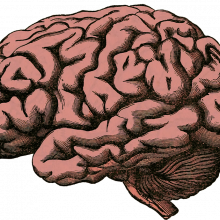
10:36 - Can we slow down how quickly our brain ages?
Can we slow down how quickly our brain ages?
Tony Wyss-Coray
As the brain ages, we see a decline in cognitive function, and the risk of neurodegenerative diseases like dementia begins to rise. Scientists have long sought to identify the factors responsible for ageing, but now new research suggests rather than looking just inside the brain, maybe we should be looking at what surrounds it too. That’s the cerebrospinal fluid, in which the brain floats. Julia Ravey spoke with Tony Wyss-Coray to find out more…
Tony - We know that the spinal fluid composition changes dramatically with age in mice and in people. We asked whether the spinal fluid from young mice could have a positive effect on the brains of old mice and, most importantly, improve their function.
Julia- And what did your results show when you tried to apply this by putting the young spinal fluid into the older mice?
Tony - We found, indeed, that young spinal fluid seems to have factors that are beneficial for the old brain. Most importantly, it improved the memory of these mice. And so they could better remember a task that we taught them a few days earlier.
Julia - Did they revert right back to the age of the young mice, or was it just a bit of an improvement?
Tony - We definitely see a very prominent improvement. We compared mice that have an equivalent to about a 65 year old person and, if I had to estimate, maybe we get their memory back to a 45 year old or something like that. So, pretty good.
Julia - And do you think these changes may revert once the spinal fluid replenishes itself, or could this infusion have longer lasting effects?
Tony- We believe that there are effects that last for several weeks, that's the length of our experiment, but it's possible that it actually lasts even longer because we actually make more cells with this experimental intervention. We can induce the production of cells that the brain uses to form memories and to recall memories.
Julia - And would there be a way that we could maybe make this up synthetically? So that doing this type of experiment and getting these effects is a bit easier?
Tony - We were able to identify at least one factor that seems to mimic these effects of the young spinal fluid. And this factor, we can actually produce synthetically. We obtained this factor, and when we now infuse this factor alone, it mimics many of the effects that we see with the young spinal fluid. This is very encouraging because it suggests that we could potentially mimic this effect, even in humans, where we would potentially also infuse this factor, or maybe find other ways; find small molecule drugs that can mimic the effect and drugs that you could take as a tablet. The drug would then get into the brain and have similar effects. Now, we're still a long ways to go but, in principle, this approach is feasible, we think.
Julia - That's still a pretty good improvement. And this work was all done in mice, so if we're thinking more about the translational impact with humans, what do you think this research tells us about, in general, how the brain's function is regulated by the environment it's in and then also translational in terms of these later life neurodegenerative diseases. Could utilising the spinal fluid, or the factors within it, help with some of these diseases?
Tony - What we're trying to do is understand brain ageing, neurodegeneration, not so much from the perspective of the pathology and the disease, but we're trying to see how we can keep the brain healthy for as long as possible, as long as you live. What we found is that the environment in which the brain resides, so this spinal fluid, has a big impact on how the brain ages, and there may be factors in there - more than the one we discovered - that we can harness and use to keep brains young and maintain their functionality until people die.
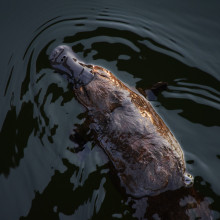
15:12 - Rare egg-laying mammals fossils rediscovered
Rare egg-laying mammals fossils rediscovered
Jack Ashby, University of Cambridge Museum of Zoology
Cambridge University has a famous Museum of Zoology. And like all museums, it’s got a lot of artefacts that have never been properly catalogued, or were packed away years ago and forgotten. And recently, going through some of these “lost finds”, assistant director Jack Ashby came across an amazing piece of history: the collection of platypuses, echidnas and possums - dating back to the 1880s - that convinced the world that these animals were real. Previously people couldn’t believe they weren’t some sort of hoax: “how can a mammal lay eggs?” they protested! The specimens were assembled by William Caldwell who was paid to travel to Australia, from Cambridge, just to answer this question. Those were the days weren’t they! Robert Spencer went to the Museum of Zoology to see these decisive specimens, and find out exactly what Cambridge University, Australian aboriginal people, and the French revolution had to do with it…
Jack - So the smallest ones we've got here are two little tiny echidnas. They're like eight millimeters long and they're they're pink. These are from within an egg. There's a tiny bit of yolk sac there, I think. And so these are the youngest ones in front of us. And at the other end of the scale, we've got a puggle here, which is a baby echidna - that's about 12 centimeters long. It's got no spines. Echnidnas, for those who don't know, are termite-eating, ant-eating egg-laying mammals that are covered in really thick porcupine-like spines. But once they start growing those spines, then they don't stay in the pouch very often. And so this is a pouch young, got a long little snout and really big digging claws for smashing into termite nests.
Robert - I mean, they really do look rather strange don't they?
Jack - Well, that is how they're typically described. So, people describe these animals as strange, as inferior and bizarre and kind of lower life forms.
Robert - Do you think we still have that outlook on them or have they moved from lower life forms to merely curiosities in the modern public eye?
Jack - I think there's probably both. It is quite common surprisingly to see these animals described as primitive, which doesn't make any evolutionary sense - no living species can be considered primitive. Everything is equally evolved.
Robert - What was the European, at least, reaction when these animals were first described?
Jack - So platapus' and echidnas were first described by Europeans in the 1790s and straight away, there was some suggestion that maybe they lay eggs, but that's not something that mamals were supposed to do. So people were very suspicious of it and it took them those 85 years until their actual specimens that they would accept were uncovered.
Robert - Why did it take so long?
Jack - That's a good question. I think a big part of it was that people weren't really willing to accept that mammals could lay eggs, but another defining feature of mammals is that they produce milk. And there was a big question about whether platapus' and echidnas could do that, because they don't have any nipples. This created a big problem because it meant that the rules of how the tree of life had been arranged, didn't work. One scientist on the very much "they do not lay eggs" side of the argument was Richard Owen. He was the first superintendent of the Natural History Museum in London, described countless fossil species, he coined the term dinosaur. But he was also kind of on the wrong side of the Darwinian evolution debate, he was fighting against evolution. But he was the one that proved that they do produce milk. And what he did was get a load of specimens sent over. He looked under the skin and found these glands and squeezed them and tasted the milk that came out, the oily substance that came out
Robert - Do we know what his reaction was?
Jack - He said he couldn't perceive anything other than the taste of the preserving spirits. It just tasted of alcohol.
Robert - So he had specimens, he was examining them, he'd shown that this furred animal was producing milk and still said that no, it couldn't have been laying eggs.
Jack - Yeah, it's bizarre. The problem was basically if you've got an animal that has some mammal-like features and some reptile-like features, then the suggestion is that one group can turn into another one, which isn't quite how we see it today. But basically means that yes, evolution is real. And there's a political side to it too. Owen was a staunch, conservative high-end society and he wanted things to stay that way, I think. The concept that if animals can change over time, should I say, then humans can change over time too. And especially in the decades after the French revolution.
Robert - And science did draw those kinds of parallels at that time?
Jack - Yes. Well, there's a very, very close alignment between who was fighting on the liberal side of political arguments and who was fighting those "animals change" arguments.
Robert - What happened? We're now certain that echidnas and platapus' do lay eggs.
Jack - What happened is, as soon as those species were encountered by Europeans, people were sent to Australia to try and solve the mystery. And indeed settlers in Australia or Aboriginal Australians, were asked whether they could tell them whether they laid eggs. And what you might consider evidence was gathered at the time, like people were saying, "I found this platapus with eggs" or indigenous people were saying, yes, they lay eggs. But that information was ignored or dismissed. So the University of Cambridge and the Royal Society and the UK government sent this recent Cambridge graduate called William Caldwell to Australia with this specific question in mind. They gave quite a lot of money and he employed a massive army of Aboriginal Australians to collect platapus' and echidnas for him. He was trying to find the smoking gun of specimens with an egg in the pouch or an egg in the nest, and that's exactly what he did in August, 1884. He sent a telegram across the oceans to the British society of the advancement of science and shared the news. And given, I think, in that kind of Caldwell was one of their own, they were willing to accept that.
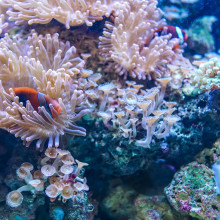
21:05 - Sunscreen can corrode corals
Sunscreen can corrode corals
Djordje Vuckovic & Bill Mitch, Stanford University
Corals are under threat internationally, most notably through the effects of climate change that warm the water and cause the coral to bleach and die. But there's potentially another threat: sunscreen. And what Stanford researchers Djordje Vuckovic and Bill Mitch have discovered is that some suncreams contain molecules that, when they get into corals, are chemically altered into forms that can react with sunlight and become toxic. We had some inkling that this might be happening, but we didn't know how. Now we do. Bill first...
Bill - There had been some anecdotal evidence that certain sunscreen components could be toxic to corals, but the mechanisms by which this was occurring were unclear. We were trying to figure this out, and particularly to figure out if there were a mechanism by which sunlight could activate these molecules to be toxic to corals, counterintuitively, since after all they are supposed to be sunscreens.
Chris- Well, what was the evidence that sun cream was bad?
Bill - Well, there was some observational evidence from the US Virgin islands by a different set of researchers. Certain coral reefs that were located in areas of high recreational use were in much poorer shape and were unable to keep generating new elements to the coral reef, and that was correlated with high levels of this particular sunscreen component called oxybenzone in the water column.
Chris - So, Djordje, how did you actually go and test this? Because obviously there's the distinction between an association, actually people going and visiting the coral and having this stuff on their skin, and then causation, this stuff on their skin is what is damaging the coral. It's not something else?
Djordje - We actually used the sea anemone, at first, as a model for corals because they are very similar and they're much easier to work with in the lab. We exposed sea anemones to this sunscreen, oxybenzone, and we did this under a simulated sunlight. Now, in order for something to be phototoxic, it would actually need to interact with the sunlight. So, some of the anemones, we actually took out the spectrum of light that sunscreen can interact with, and then exposed the other anemones to full sunlight. The anemones that were in the dark section, they didn't die for 21 days, but the ones that were under full spectrum sunlight, they died on average in about 10 days.
Chris - So that would suggest that the sunlight is necessary for something to happen to the sunscreen in order to become toxic for the anemones in the experiment.
Djordje - That's right. And that seemed like a very paradoxical result, actually.
Chris - Why?
Djordje- Well, you would expect the sunscreen to actually protect you from sunlight, not to make sunlight kill an organism.
Chris - Bill, does this actually prove, then, that it is this that is causing the problem for corals?
Bill - There are two types of sunscreens out there. Some are mineral based, titanium dioxide or zinc oxide, and others are organic molecules. We were studying the latter and, in particular, a chemical called oxybenzone. These molecules are very hydrophobic, meaning they don't want to be in water, so they readily accumulate in tissue, including coral or sea anemone tissue. They absorb sunlight, particularly the UV wave bands, but when molecules absorb sunlight, they enter an excited state. Many molecules in that excited state can go on to damage biomolecules. Sunscreens also absorb sunlight, enter this excited state, but they have a portion of the molecule that's designed to deactivate this excited state and return it to heat. Essentially, to prevent damage to neighbouring biomolecules. However, these corals and sea anemones, after they've absorbed this molecule, one of the strategies to get rid of it is to alter the molecule and make it more water loving so it can get back into the water column. Unfortunately, what they do is they add the sugar to the portion of the molecule that's designed to deactivate this excited state. They convert what is a sunscreen into a phototoxic.
Chris - And on that note, although you have focused on oxybenzone in this case, a constituent of sunscreen, there are many molecules that are pretty similar, chemically speaking, aren't there? Could the same chemistry be happening with other things that are out there that we chuck away, that we use cosmetically or industrially. Could this be a bigger problem than just a sunscreen problem?
Bill - Well, we believe that to be the case. In fact, we're currently looking at alternative sunscreen components that share similar structures to the oxybenzone, the molecule we looked at in this study, but it's too early to say.
Djordje - We should also be careful about potential implications to other species, including even humans, for instance, because we do know that humans make a very similar compound from this oxybenzone sunscreen. We did test this out in the lab, since this is The Naked Scientists podcast. I should point out that I did actually get, in one experiment, naked and put on some sunscreen. Then, later on, measured it in my urine and then isolated this compound and actually found that it has potential to be a phototoxin.
Chris - But, Djordje, who we were hearing from there, is it pains to emphasise that, unlike corals and sea anemones, humans are not, thankfully, usually transparent and therefore sunlight shouldn't get inside us to turn those molecules into toxins like it does in other species like the corals. Nevertheless, we are very impressed that he got naked in the name of science.
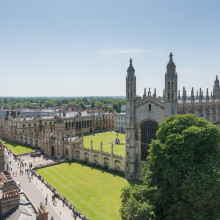
28:02 - Medieval cemetery unearthed in Cambridge
Medieval cemetery unearthed in Cambridge
Katie Haworth, University of Cambridge
Under the site of the new Croft Gardens accomodation in Cambridge lay one of the best archaeological finds in the UK for a long time. Katie Haworth, from the University of Cambridge, explained how she is studying these remains to Julia Ravey...
News Reel - Addressing the United Nations today, president Zelensky accused Moscow of war crimes. Some breaking news, the UN human rights office has issued a damning statement describing the war in Ukraine as a horror story of violations against civilians. They have reported finding hundreds of bodies and mass graves in the town of Bucha. Russia denies doing this, but there's skepticism from a watching world.
Julia - War crimes. Violations of international law, such as the targeted killing of civilians, which could lead to the prosecution of those responsible. Proving a crime has been committed in these circumstances is a long process and can be incredibly tough. But science can provide vital evidence, specifically archaeology and anthropology. These are fields often associated with historical findings or learning about ancient life. But when applied within forensics, they can help solve crime. Through the use of context, evidence and examination, both disciplines can tell us about who individuals are and potentially help us understand what happened to them. Even if they lived a very long time ago. I'm standing right now in front of, well, pretty much a building site, to be honest. This is Croft Gardens and these are new college accommodation for Kings College in Cambridge. To look at, you wouldn't think this was a really interesting archaeological site, but last year, when this site was being cleared for these buildings, there was a cemetery found under this plot. This was a cemetery with 62 plots containing 69 bodies. And these people were thought to have lived between the fifth and sixth century. Katie Haworth from King's college, Cambridge is now studying who these people were.
Katie - I think it's really important to say that cemeteries are quite different from other kinds of archaeology because often archaeology is the remains of things that aren't intentional deposits. Whereas a cemetery is a very carefully structured space. There's a lot of decision making about how to deal with the death of a, presumably, valued community member. And I think behind all these decisions, we can start to understand something about the community as a whole and how social relationships might have played into those decisions that are made.
Julia - I think it's so interesting how you can take this static scene of a cemetery and then try and piece together what it might have been like to be alive during that time within this community.
Katie - It's so fascinating. And it's drawing together so many strands of evidence - analysing the bones, analysing the spatial layout of the cemetery, the objects that are there, unpicking the DNA - which should tell us more about their health on one side, but also the relatedness of our population.
Julia - Can this finding of the cemetery - of the bodies themselves - tell us anything about how these individuals may have died?
Katie - We don't have a huge amount of evidence to say how people died. Often we're working with just bones, but we can pull out a good amount of information from that. One of the studies that's being looked at is an examination of evidence for plague. But I think for most people, it would've been quite a difficult life. People would've suffered a great deal with periods of stress in life. In many cases that is probably what's resulted in death, but we're just not seeing it represented in the bones.
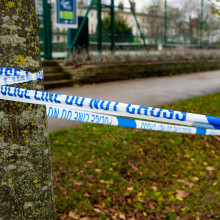
31:39 - Finding archeological clues at crime scenes
Finding archeological clues at crime scenes
Nicholas Marquez-Grant & Roland Wessling, Cranfield University
Understanding how a person died can be important historically. But nowadays, this information is vital in cases of crime, mystery or wrongdoing. The first clue in these investigations are often found at the scene and it is the role of forensic archeologists to help find and carefully excavate these areas. Trying to visit a real crime scene is pretty much impossible, but we came to the closest thing; a mock-up burial site. This is set up for students at Cranfield University to learn how to work on these precious and sensitive scenes. Nicholas Marquez-Grant, a forensic expert at Cranfield, first set Julia Ravey out on a task to try to uncover the scene of a crime...
Nick - Intelligence says that a few weeks ago, two mass graves were created in this location. Some mass graves that are, say the size of a tennis court, more or less.
Julia - Well, there's a big piece of ground here that's not got a grass on it. Am I getting warmer?
Nick - Exactly what we're seeing is that there's an area where the grass has been cleared. There's no vegetation. We've got soil and this soil we know is usually found about meter in depth in this location. So it means that something has gone in and resurfaced this soil. And you can also see some tyre marks there from either a lorry bringing bodies or even a mini digger. And it's got the right size according to the number of disappeared that we know. So in fact, if you look at the rest of the area, basically I should give you a Masters already. It's approved. I would start digging this location as the most likely for that mass grave.
Julia - What would be the next steps?
Nick - What tends to happen on occasions is that prior to digging up this, we might take some samples of the vegetation and the soil, because that soil may be linked to say a car vehicle, some footwear analysis. And we'll try to find the boundary of that mass grave. So we'll probably define this area a bit more by hand. And then we may go with a machine and we look out for any changes in the soil - any colour changes. If there's any discovery of clothing or any human remains, we'll stop the machine and we'll start digging by hand. We are going to document the position within the grave. They'll be lifted. And once you've emptied the grave and you've recovered all the human remains, you still continue digging because in the base of the grave is where you may find more evidence
Julia - Over the field, Nick's colleague Roland Westling was busy digging up the earth. So we went over to see what was going on. We're sort of out in the sticks a bit here, aren't we? And I'm now faced with a few different plots. What's going on right now?
Roland - We are basically standing next to two shallow graves that are going to house a victim each, and there's a very complex scenario behind it, we've made a massive story up.
Julia - And so at the minute in the grave, there looks like there is a t-shirt and some trousers. Is anything else going to be going into there?
Roland - I'm just basically putting ribs and vertebrae into the polo shirt. There's already a skull underneath and the legs. So this body has essentially been dismembered. But each of the graves is essentially going to house a slightly different body. There will be a link between all of them. So there will be something that is going to link them to the same perpetrator.
Julia - And when you're putting the body in, are you putting in any other clues? So like the way the graves have been dug, or any other bits of evidence that they have to find to piece together, what's gone on?
Roland - Some victims will have artifacts on them like a mobile phone or a receipt.
Nick - And as we're digging out where you can see these tool marks, so we can tell it's obviously hand dug, potentially the spade. You can cast this or photograph it or so on. There's a few other scoops around there. It's pretty similar, I think, to some of the cases that may have been encountered in the past in criminal investigations.
Julia - Very interesting. It looks scarily accurate. I'm sure that some of the planes flying overhead must look out the window and go, 'What's going on here?'
Nick - Of course they are plastic skeletons. Don't try this at home!
Roland - But they can look very realistic.
Julia - Well, I'm guessing there's a lot of work to be done here, so I'll let you get to burying the bodies.
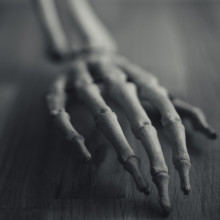
36:06 - How human remains can inform forensics
How human remains can inform forensics
Corinne Duhig, University of Cambridge & Heather Bonney, Natural History Museum
Once evidence at the scene has been documented, the body undergoes examination to try to understand who this person was and what happened to them. This involves the work of forensic anthropologists, who use bones and other human remains to tell us more about the individual. Corinne Duhig, an osteoarcheologist at the University of Cambridge, explains to Julia Ravey what processes are undertaken to answer these questions...
Corinne - We start small scale and we are looking to build up a profile of that person, looking at their ethnicity, family relatedness sex, age, stature, and body form. And when we've done that, we've created in a sense, a little description of that person
Julia - And how does this play into forensics? So for example, how can we identify potentially how someone died from the remains that we find?
Corinne - As you can probably guess, it's very uncommon to find a clear cut answer just from the remains themselves. The smoking gun or the smoking bullet; the weapon embedded in the body or the cutoff head or whatever it is; is pretty rare. But what we can do is we can say things like - I'm looking at this man's spine and he has one crushed vertebra that has not healed, so it's been done relatively recently. Now this looks a bit odd. What can you tell me about this man's story until the time when he disappears for us to work out; was this just an accident he had in the country where he'd moved to or was it something connected with his actual moment of death? So we start binding our information in with what the police have, the coroners have - absolutely combined work.
Tube Tannoy - The next station is South Kensignton. Exit for the museums and Royal Albert Hall...
Julia - Bones are a key component in informing identity. To see this evidence firsthand, I went to the Natural History Museum in London, which holds a selection of human bone replicas. Principle curator in anthropology, Heather Bonney, talked me through some of the characteristics bones can reveal.
Heather - This is a cast of a neonatal skeleton. And you can see that the bones are all really, really tiny. And then as the child ages, these bones begin to fuse and they obviously grow in size. And we can use either measurements of some of these long bones or the stages of the fusion to determine how old that individual was. And we can continue using development changes up until around the age of 30. Some of the very last bones fuse, fuse in your late twenties, but then we start looking at degenerative changes.
Julia - Well, I'm 29 now, I'm 30 in a few months. You're looking for degenerative changes.
Heather - Degenerative changes. And the issue with these are that they're far more impacted by your day-to-day life. This is a cast of a pelvic bone from a 65 year old male, who you can see the changes related to arthritis in the hip here. So what happens is that the cartilage within the joint erodes away and you essentially have bone rubbing on bone, which causes stress on that joint, and you can see the extra bone growth within there. It's not all nice and smooth, it's quite rough and nobbly.
Julia - Can we identify from remains potentially how they died?
Heather - Sure. So I've got some examples here.
Julia - Wow. That skull doesn't look too healthy.
Heather - No, this is the cast of a skull of someone who'd sustained quite a massive head injury during life that had completely penetrated the skull. But you can see how healed it is, it's all completely smooth and rounded at the edges. And the bone has grown over the hole that went through and they survived that. And they've lived for some time afterwards enough so that there's no reaction going on anymore. There's no bone gross happening. That's completely healed up. And then we have an example of a cast of a shotgun injury that did kill this individual. And you can see the very sharp edges and you've even got the outline of some of the shotgun pellets, where you've got these round circular depressions at the edges.
Julia - Whilst leaving the museum, one particular image of a human jaw bone caught my eye. And Heather explained the gruesome story it told.
Heather - This is a prehistoric individual who we suspect was decapitated. And you can see these cut marks here on the back of the mandible. If you're decapitating somebody from the back, you can't see where they're chin is and so it often leaves these cut marks.
Julia - It is a really blunt clear cut.
Heather - This took a few attempts here.
Julia - Oh my goodness. I feel like when you see something like that, you are almost transported back in time. I can like feel that in my jaw, when you said that took a few times and you can see the impact there on that individual.
Heather - Yeah, very much so it's pretty violent.
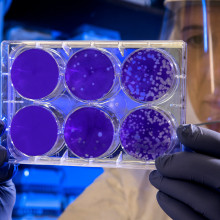
41:35 - Microbial clock telling time of death
Microbial clock telling time of death
Jessica Metcalf, Colorado State University
We can learn a lot about a person based on their skeleton, but a non-human material may also be informative in providing clues about what happened to an individual. Forensic anthropologists are investigating if the microbes which live in and on our bodies could reveal crucial information about time of death, and maybe more. Jessica Metcalf, from Colorado state university, explains to Julia Ravey how death impacts our microbial roommates...
Jessica - After death, the environment for our human microbiome changes dramatically. For example, temperature is no longer regulated, the immune system's no longer active. And that allows for certain types of microbes to proliferate. Also, in the case of an outdoor death scene, you also have environmental microbes that can then invade the body that we don't usually have living on us.
Julia - How can we use these changes in the microbes on us and in us to help inform forensics?
Jessica - The really cool thing about this microbial decomposer community that assembles after death is it's actually really predictable and fairly consistent - they emerge sort of at the same timeframes. And so that allows us to use all these microbes to build a model that then can predict how long a person's been dead within a certain amount of error.
Julia - If you just found bones or remains, can we still use microbes to tell us about the death of this individual?
Jessica - The more days out from time of death, the fewer tools and types of evidence, usually you have for estimating time of death, unless you have something like a last sighting or a last text message or something really solid like that. When we look at the microbial community that forms on the skin or nearby soil, if it's outdoors, we're usually looking sort of the first 21 days. And then after that, one of the things we've been working on is looking in the bones, so the microbes that then are able to more slowly invade the bone as kind of that longer clock and that tends to work really well as well. The error is a little bit bigger, but it's still really useful, especially since there's really not anything else to help you in those timeframes.
Julia - And how do you study this? Because I'm guessing it's quite a difficult thing to study at crime scenes. So how have you managed to chart this microbial clock?
Jessica - In the United States, we have this really valuable resource of anthropological forensics facilities that accept willed body donations. So humans that have decided to contribute their body to specifically forensic science. And so we work with a number of these facilities to place cadavers out and then we sample daily, for example, for 21 days. And then we profile the microbes for each sample using DNA sequencing.
Julia - And do things like temperature impact this change in microbes over time?
Jessica - Yes. In fact, we don't use a chronological day. we use something called accumulated degree day when we are estimating the time of death. So when it's hotter, you have a lot higher accumulating degree days and in the winter slower, and that's because microbes, their activity is dependent on temperature.
Julia - Do you think this type of technology could be used in other ways in forensics? For example, if there was wrongdoing in a crime, could we look towards the microbes, almost like DNA, to see if there are certain microbes there that could tell us a little bit about maybe what happened to this individual?
Jessica - Yes, absolutely. I think this is the tip of the iceberg in how we can use microbes as physical evidence. Another area of research I've worked on is trace evidence. So each of us have an individual skin microbiome that's fairly consistent over time. And when we touch things, we transfer it. Looking at that as a potential type of evidence as well. One could imagine a person's gut microbiome could tell some stories about what that individual has been up to. Certainly there are people working on things like the dust microbiome and what is the biogeographical tag that might be contained in that type of sample. So I think there's a lot of different ways that we can potentially use microbes as physical evidence.
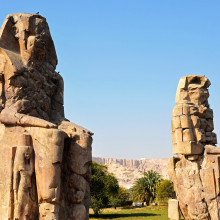
46:30 - DNA analysis unveils Egyptian mummy mystery
DNA analysis unveils Egyptian mummy mystery
Corinne Duhig, University of Cambridge
A key tool in forensic anthropology is analyzing DNA, our genetic fingerprint, to get a closer match on identifying an individual. This tool has also been useful in solving more ancient mysteries as Corinne Duhig from Cambridge university explains to Julia Ravey...
Corinne - In Egypt, we have had the question of the royal mummies. Particularly ones that were found in caches, where they had been robbed and then taken by priests and rewrapped and reburied and put in what were thought to be secure places. Now, it was always thought that we knew who they were because the priests doing the re-wrapping had written the names on the wrappings. In about 1990, lots of the royal mummies, though not all, were x-rayed again and had DNA samples taken. And from this, various family trees were produced. And it was quite helpful because there was one mummy of a Pharaoh and we all looked at him and said, "that can't be a Pharaoh because he's not buried in the right body position." And this was useful because the DNA actually showed yes, he's part of the Royal family, but he's not deep within the Royal family. He is actually somebody else misnamed.

47:51 - Reuniting remains of soldiers with relatives
Reuniting remains of soldiers with relatives
Nicholas Marquez-Grant, Cranfield University
Another recent use of forensic anthropology has been in reuniting the remains of soldiers lost in war with living relatives. Julia Ravey spoke to Nick Marquez-Grant at Cranfield university who is helping with these humanitarian efforts for remains from World War I, World War II and the Spanish civil war...
Nick - A lot of the bodies were buried trenches, buried in mass graves by the enemy or so on. So now it's a big push to open those mass graves. Perhaps this comes late. But what certainly we can say is that comes at the right time, when we have the DNA in place, we have other techniques to help identify those soldiers.
Julia - So what happens in the field in a sense? So if you find some skeletal remains that you believe to be a soldier who's been lost in battle, what is the process that happens?
Nick - The important thing is when we're excavating to be able to associate an artifact with a person. So I am thinking mass graves here. We have say 30 people in a mass grave, and we have personal effects like a photograph of the family or a wallet. It's so important to be able to identify, in the field, which object goes with which body. I get quite emotional when I see objects because I'm used to examining human remains and look at bone very objectively. And then you have these objects, which could be a train ticket - a return train ticket - or a wallet or a poem or a photograph, and they really bring that person's life to life, actually. This analysis is done to provide a dignified burial to the soldier - a soldier that may be in a trench, is to bring them a dignified burial. Is not always possible to find relatives, but of course, if relatives are found, it's about closure. In the case of the Spanish civil war, which I work on, where people were executed in 1936, including my great-grandfather who still missing, it's about providing a dignified burial to that person. But beyond this returning the remains to the families where possible, there's also a question of what happened. And although some of these cases are not criminal in itself, they're still forensic because we follow forensic protocols. But some of these cases may go to court eventually. So the cases of Spain, the Spanish Civil war, you know, there may be a court case in the future. So it's all done with forensic protocols and chain of custody and all these police processes that we follow. These things should not happen again, and sometimes the bodies are the only communicators that we have of what really happened. Some civil wars are silenced, you know, in textbooks and it's just the body themselves and how they lie and how they're being thrown into their grave that are really the only voice of what happened. And I think it's important for the public to see that.

50:35 - Anthropological evidence in war crimes
Anthropological evidence in war crimes
Sue Black, Lancaster University
Identifying individuals is also crucial in events like natural disasters or instances of war. And as Nick mentioned, this could also be important for implicating crime. Sue Black, forensic anthropologist at Lancaster University, has worked on some of these tragic cases and explained to Julia Ravey how forensics is used in these circumstances...
Sue - So if we take the tsunami, for example, so the boxing day tsunami that happened in 2004. We knew that in Thailand, there were at least five and a half thousand, if not more, bodies that were recovered and taken to the centre where we were going to do the examinations. All the countries around the world would say, we've had a missing person report. You will take all of the antimortem information. So you'll have a DNA sample from parents or children. You might have fingerprints of the individual. If you think about where your fingerprints are in your house; they're all over your screen, they're all over your phone. Your DNA we'll find in your bedroom, we'll find it in your laundry. Is there any information in your medical records that might be important? You might have broken your arm six weeks ago or six months ago or 10 years ago. And so we create this huge picture of the missing person, the antimortem missing person. And then we go to the postmortem and we collect as much information as we can. DNA samples, fingerprints, how tall were they? How heavy were they? Did they have tatoos? And then we bring them together in a matching centre and you'll get a match that says it's most likely.
Julia - And science is obviously at the heart of this process, but it seems to be really quite an emotional job. So have there been any particular moments during your career which have been emotionally very challenging?
Sue - We try not to be involved in the emotion because as a scientist, your job is to be unbiased. But we're not cold, but we know that we have to have that level of detachment. Sometimes it's almost impossible to have that. And I think back to one case in Kosovo in particular, which was a gentleman whose entire family was caught in a rocket propel grenade. And he said to us, "I'm concerned that they're all buried in this one hole together," and that his God could not find them unless they all had their own grave with their own name. And so we laid out the number of sheets of individuals that we believed were present in the mortuary and a spare one, because we knew we wouldn't separate all of the bits. And as we went through each part, we were able to say, that's a baby, that's a child of about four, that's an adult, but it's an elderly adult. And so we were able to then put a little bit on each sheet. We have that moral pressure on us. And it is that tension sometimes that is really challenging, but we still try not to get involved in the emotion.
Julia - A really tragic instance of a loss of a lot of life is war. Have these findings been used in implicating war crimes in the past?
Sue - Oh, absolutely. So, I mean, you just need to go back to Kosovo. So Miloservic, Mladic, Karadzic, forensic anthropology was at the core of a lot of the evidence against them. Because what you have in a war crime situation is you have somebody who says they saw something, you bring the forensic teams into that scene, but you don't tell them all the information because they need to recover what they find, they need their independent opinion. And if the evidence and the opinion of the experts matches with what the witnesses are saying happened, and there's no prior knowledge crossed between the two teams, then you have a really strong set of evidence to take into the courtroom.
Julia - And we're seeing a really tough situation at the minute in Ukraine with this information. And I've seen that teams of anthropologists and archeologists are going over. Is that the aim of this? Is it for identification purposes and then down the line to try and corroborate others' stories about what's actually been going on on the ground?
Sue - So the identification and the evidence of crime go hand in hand. It's much more appropriate when you can say, this is Joe Blogs, who was 33 when he died. Because then you can look into the history of that individual. Did they have any paramilitary connections or not? Because it'll be the definition of was this a legitimate combat death, or was this death of a civilian? If the individual is a five year old child, then that answer is very obvious. The evidence is saying, who was killed here? Are they all men of a fighting age? No there's wome, and there's elderly, and there's children. This is a war crime is the conclusion that you may come to based on the evidence, but the identity of the people is inextricably linked to the charge that you're going to place on that particular site.
Julia - Identity is at the heart of understanding who a person was. And when placed within the context of the scene in which they were found, what happened to them. This is important in reuniting loved ones with those they have lost, but also in the wider implications of understanding the circumstances of their death and trying to ensure these events are never repeated. The claims of war crimes in Ukraine are ever growing as the conflict continues on and through using archeology and anthropology, hopefully one day, those claims can be brought to justice

56:31 - Can Earth's rotation generate electricity?
Can Earth's rotation generate electricity?
Otis - Alternative energy sources are always something scientists are working on to combat climate change. So can we use the natural spinning of the earth to generate electricity? I asked for the help of Matt Rooney, head of engineering policy at the Institution of Mechanical Engineers, to first explain how wind turbines work.
Matt - So wind turbines work by capturing the energy from wind and producing electricity. They do this by having very large blades, so as the wind passes over the blade, this creates pressure differential similar to an aircraft wing. This creates the rotational force, which drives the turbine and rotates it, which drives a generator to create electricity.
Otis - Sadly, if we were to attach a generator to the earth, like the blades of a wind turbine, the Earth's rotation is just once a day so it's currently too slow to produce any meaningful charge with today's technology. However...
Matt - So in a roundabout way, the rotation of the earth does create the conditions for wind turbines to capture energy from wind because our weather conditions are created by the sun's energy and the rotation of the earth.
Otis - That's right. The rotation of the earth is in a way already being harnessed to generate electricity. Thank you Linda, for asking that question










Comments
Add a comment